A lawn that’s green and healthy accentuates your landscape and enhances your well-being. Fertilizing your grass helps promote your turf’s overall health as it helps in reducing weed growth and pest infestation.
Applying fertilizer requires knowledge and care. By adhering to proper fertilizing guidelines, not only will you have a robust and beautiful, but you will also make your surroundings greener and more refreshing.
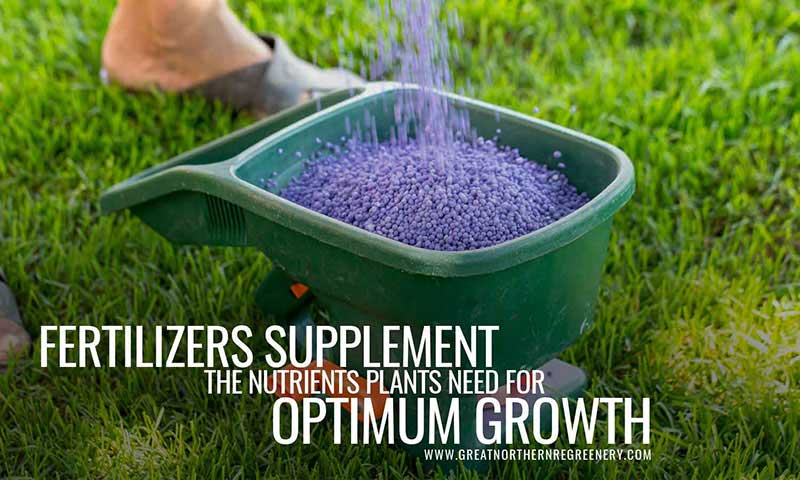
How fertilizers work
Choosing the right fertilizer will help fuel your lawn’s robust growth. Like human beings, lawns require specific nutrients and minerals to thrive. Fertilizers are to plants what food supplements are to people. We fertilize so our grasses can get the much-needed nutrient boost they might not be getting naturally from the local soil conditions.
Fertilizers contain vital nutrients, namely potassium, phosphorous, and nitrogen. In essence, these are what each of these nutrients does to your lawn:
- Nitrogen – Improves plant colour and growth
- Phosphorus – Nourishes seedlings and encourages root growth
- Potassium – Builds a plant’s resistance to stress and disease; keeps plants strong and healthy all year round

Growing a healthy lawn requires planting the right grass for your zone, soil, and climate. Doing so spares you from the constant labour of working against the growing conditions of your property.
Your location can help you determine how your grasses will perform in every season, year in and out. The key zones for Canadians are:
- Northern Zone – If you’re living in a northern area of Canada where the winter gets cold and summer is moderate, perennial ryegrass, tall fescue, and Kentucky bluegrass are ideal choices for you.
- Transition Zone – Homes in this region experience extreme summers and winters which can make growing a healthy lawn quite challenging. Grasses that thrive in cooler temperatures can struggle during hot spells, and warmer-weather varieties are likely to suffer from winter damage as well.
If you’re living in the Transition Zone, tall fescue is a good option. This type of grass can develop a tolerance for both cold and hot temperatures. Its ability to acclimatize to extreme weather conditions allows tall fescue to remain green throughout the growing season. Other grasses that may do well in the Transition Zone are Kentucky bluegrass, zoysia grass, and bermudagrass.
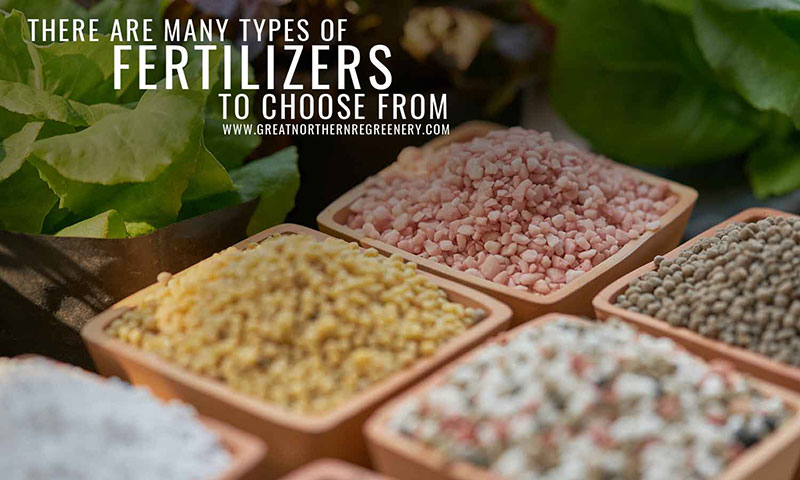
Types of fertilizers
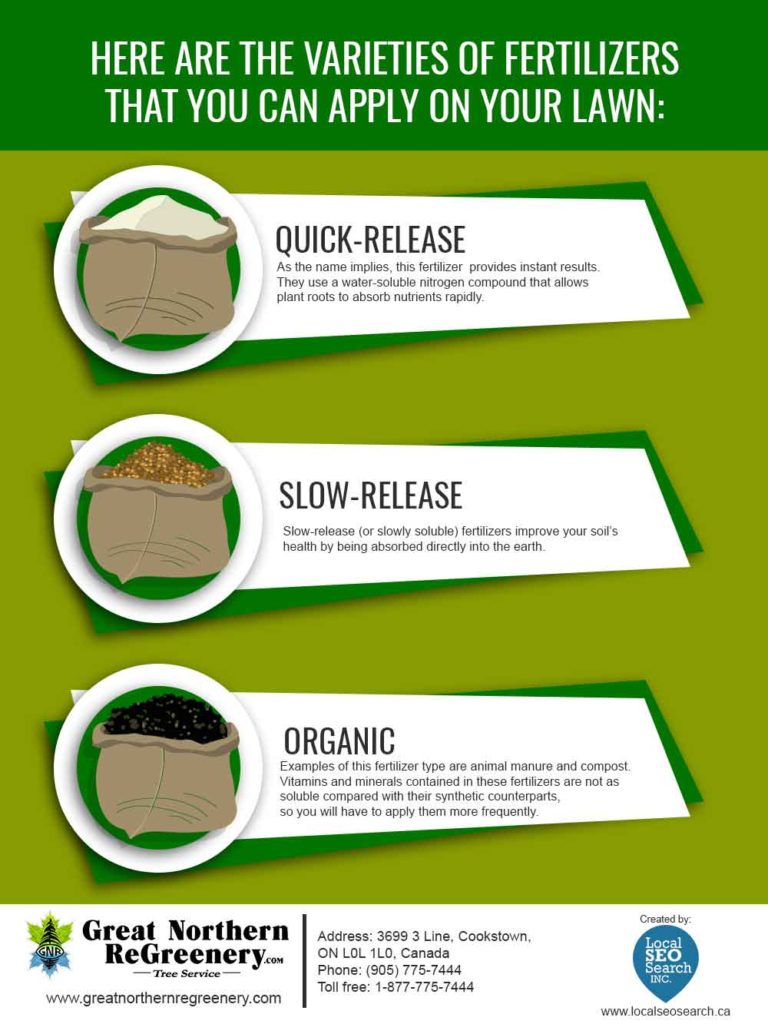
Here are the varieties of fertilizers that you can apply on your lawn:
- Quick-release – As the name implies, this fertilizer provides instant results. They use a water-soluble nitrogen compound that allows plant roots to absorb nutrients rapidly. However, because they are water soluble, quick-release fertilizers are used in smaller portions and more frequent intervals. They provide rapid plant growth because they encourage fast shoot growth and greening.
- Slow-release – Slow-release (or slowly soluble) fertilizers improve your soil’s health by being absorbed directly into the earth. This slow absorption eliminates the risk of fertilizer burn; its downside is that nutrients are not as readily available to your grass. Slow-release fertilizers frequently come in pellet form and are dependent on temperature or soil moisture to trigger absorption. They often underperform in colder soils.
- Organic – Examples of this fertilizer type are animal manure and compost. Vitamins and minerals contained in these fertilizers are not as soluble compared with their synthetic counterparts, so you will have to apply them more frequently. As they rely on microbial activity to break down nutrients, organic fertilizers also do poorly in colder soils.
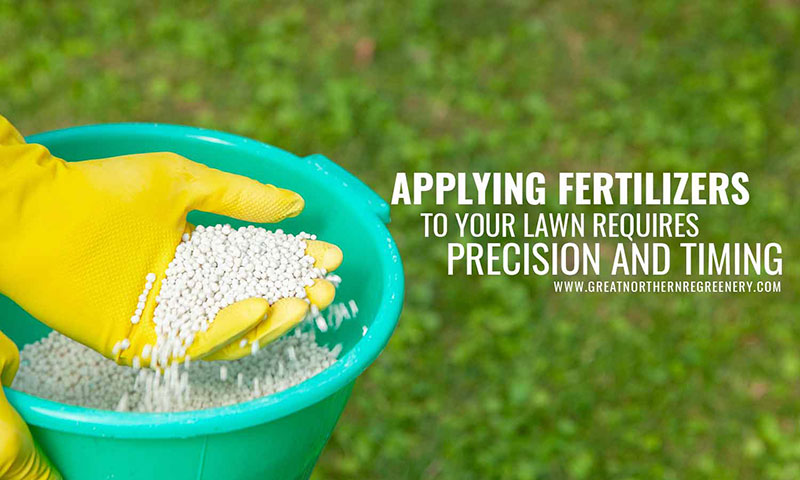
Elements to consider when applying fertilizers
Before applying your fertilizer, there are several factors to consider before you will be able to gain the full benefits of your work and grow a healthy and vibrant lawn.
- Source – Choose the right fertilizer for your yard. Ideally, have your soil tested by a professional before purchasing fertilizer. All fertilizers have a numbering code that identifies its proportions of essential nutrients: nitrogen, phosphorous, and potassium. A bag that is labelled “10-0-5” contains ten percent nitrogen, zero percent phosphorus, and five percent potassium.
- Rate – Fertilize evenly and with optimal proportions. Get the dimensions of your lawn to know precisely how much you need. Follow the instructions on the bag. Use a spreader to make sure the fertilizer is applied evenly across the yard. Uneven amounts of fertilizer can result in burning or colour variation.
- Time – Spring is an ideal time to feed your lawn. Try fertilizing your lawn once every other month starting in April, or once the snow has cleared and green growth is showing. Feeding three to four times within a year allows grass to develop a deeper root system. Strong roots help plants survive in the heat conditions and can help fight off diseases and insects. Avoid fertilizing when rain is expected to pour.
- Place – Yard conditions can influence your lawn’s growth. Challenges such as shading, soil quality, and water levels can impact the effectiveness of a fertilizer. Follow the instructions for your chosen fertilizer, and your lawn grass will adapt to it according to its species and your region.
If you live close to a lake, stream, or pond, choose a phosphorus-free fertilizer. Excess phosphorus content in the water can encourage algae growth, harming the natural habitat. Clean up traces of fertilizer to prevent them from washing into sewers.

How to apply lawn fertilizers
As mentioned earlier, using a spreader ensures that all areas in the lawn are evenly covered. Rotary or broadcast spreaders can prevent getting fertilizers on sidewalks, driveways, or streets. Water immediately after application. This helps the fertilizer settle down into the soil. It also washes off grass blades and prevents fertilizer burns.
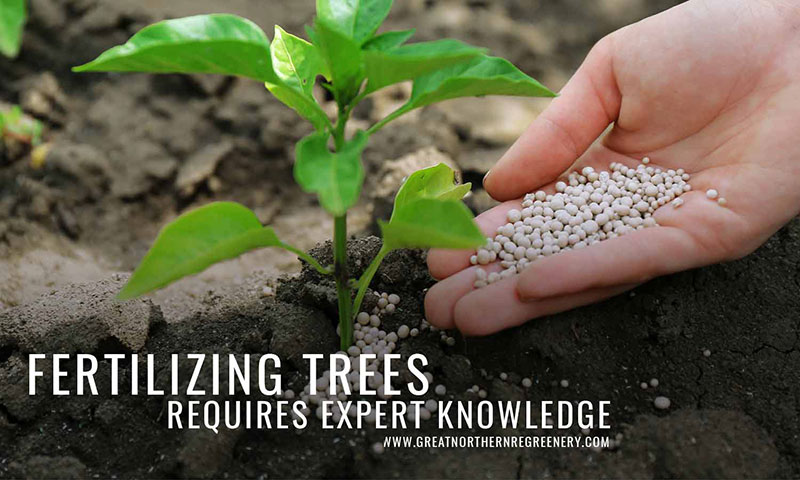
Trees need feeding, too
Do you have trees and shrubs in your lawn? Fertilizing these plants requires a different level of expertise. In many cases, trees in urban areas grow in soils with inadequate nutrient levels. This prevents them from achieving optimum growth. Like all other plants, trees need nutrients to build a stronger defence against pests and diseases.
Signs that your trees need proper fertilization:
- Smaller or fewer leaves than normal
- Wilting leaves, leaves with dead spots or that are a lighter colour than normal
- Short, annual twig growth
- Branches that are dying back at the tips
If you suspect that your trees or shrubs are need fertilization, call in an expert arborist to examine the plants, eliminate the possibility of a more serious issue, and to properly provide the optimum fertilization plan for your yard.
If you need expert assistance for any tree service needs, like tree and shrub fertilization, contact Great Northern ReGreenery. In addition to fertilizing, we specialize in tree care services like tree removal, cabling and bracing, and tree inspection. Call us at (905) 775-7444.





